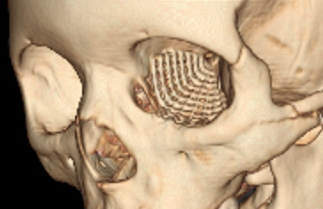

Introduction: Fractures to the medial orbital wall can result in significant patient morbidity. Surgical approaches in the past have focused on transcutaneous approaches with a current trend towards the development of transconjunctival incisions and the use of endoscopic-assisted methods. Different authors have suggested different variations of the medial transconjunctival approach, however an in depth anatomic comparison has not been presented.
Objective: 1) To compare the anatomic basis for three different medial transconjunctival approaches to the medial orbit. 2) To review the clinical outcomes of medial orbital wall fracture repair with a retrocaruncular approach.
Methods: An anatomic and clinical study was conducted. 1) In 30 fresh cadaver orbits, the classic transcaruncular approach was compared with the precaruncular and a retrocaruncular approach under magnified dissection. 2) A retrospective analysis was conducted on a series of 15 consecutive patients that underwent primary repair of medial orbital wall fractures using a retrocaruncular approach over the past 2 years. A retrocaruncular medial transconjunctival incision was used in all patients without endoscopic assistance. Titanium implants were shaped by hand based on the angular measurements between the medial wall and floor of the orbit on the CT scan of the uninjured side. Post operative CT scans were obtained for all patients. Angular relationships between the medial wall and floor of the orbit were determined on hemi-coronal CT scans in a blinded fashion. Within-patient comparisons were performed by three experienced clinicians based on axial and coronal views and ratings assigned based on a Likert scale.
Results: 1) Anatomic dissections showed the all three approaches provided excellent exposure of the entire medial orbital wall. The classic transcaruncular and also the precaruncular approaches demonstrated two negative attributes: a) both resulted in exposure of the upper and lower tarsi when incisions greater than 1mm were used, b) both required a transition from the preseptal plane to the postseptal plane when combined with inferior fornix incisions. None of the approaches resulted in damage to the medial rectus, inferior oblique muscles or the lacrimal system. 2) A clinical study of 15 patients showed all reconstructions were possible without endoscopic assistance. On follow-up there were no functional or cosmetic sequelae relating to the conjunctival incision. Post-operative C.T. scans showed anatomic orbital reconstruction in all patients. Angular relationships between the medial and inferior walls of the reconstructed orbits were within five degrees of the uninjured orbit in all cases. All reconstructions were judged as excellent by the clinicians.
Conclusion: A variety of approaches to medial orbital wall fractures have been described in recent years. Medial orbital wall fractures can be successfully repaired using transconjunctival incisions with minimal morbidity and without using endoscopes or indirect trans-sinus approaches. The retrocaruncular approach surpasses the transcaruncular and precaruncular methods due to its conservation of intricate medial canthal anatomy, its decreased risk of postoperative lid complications, and its ability to be directly carried to the inferior conjunctival fornix when repairing the orbital floor in combined fractures. This study provides an anatomic basis and clinical support for the use of the new retrocaruncular incision as the preferred approach to the fractured medial orbit.

